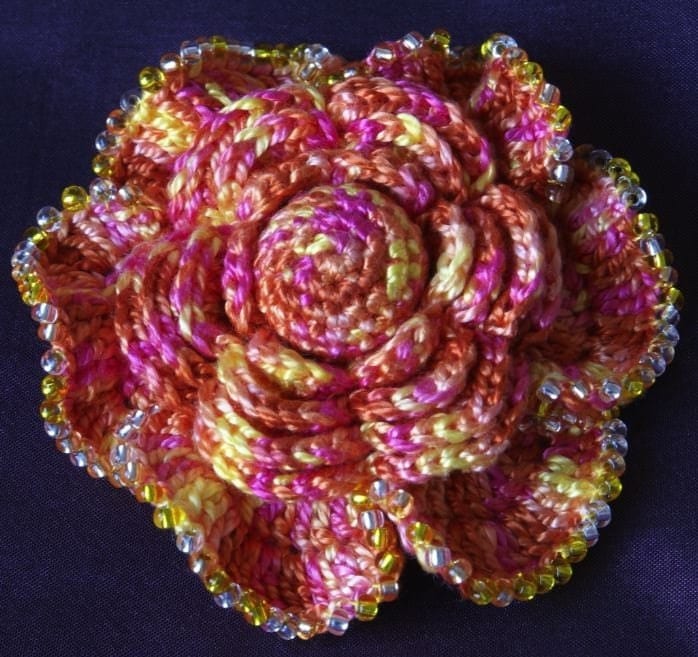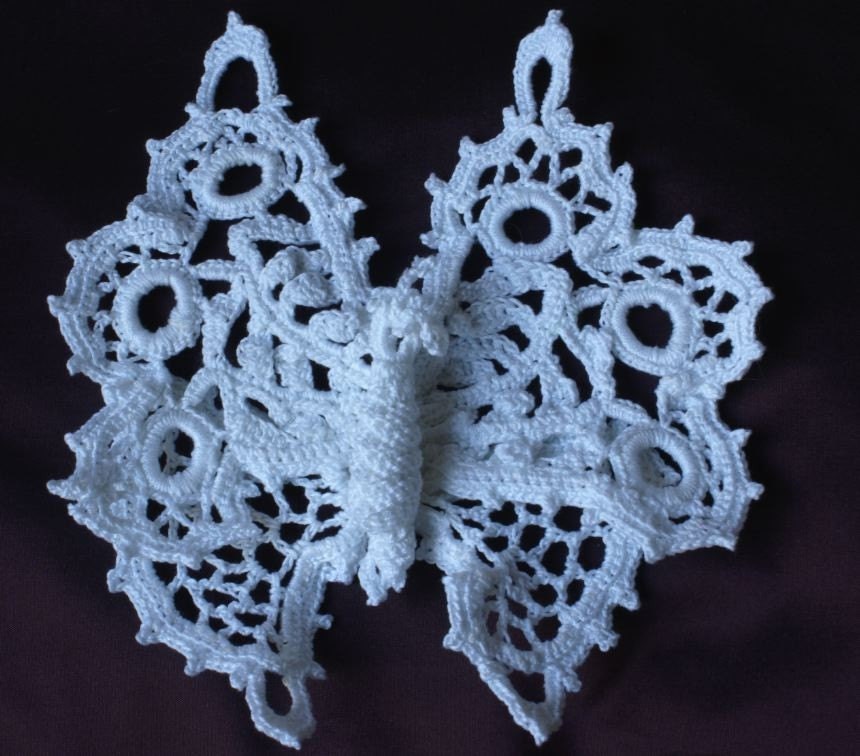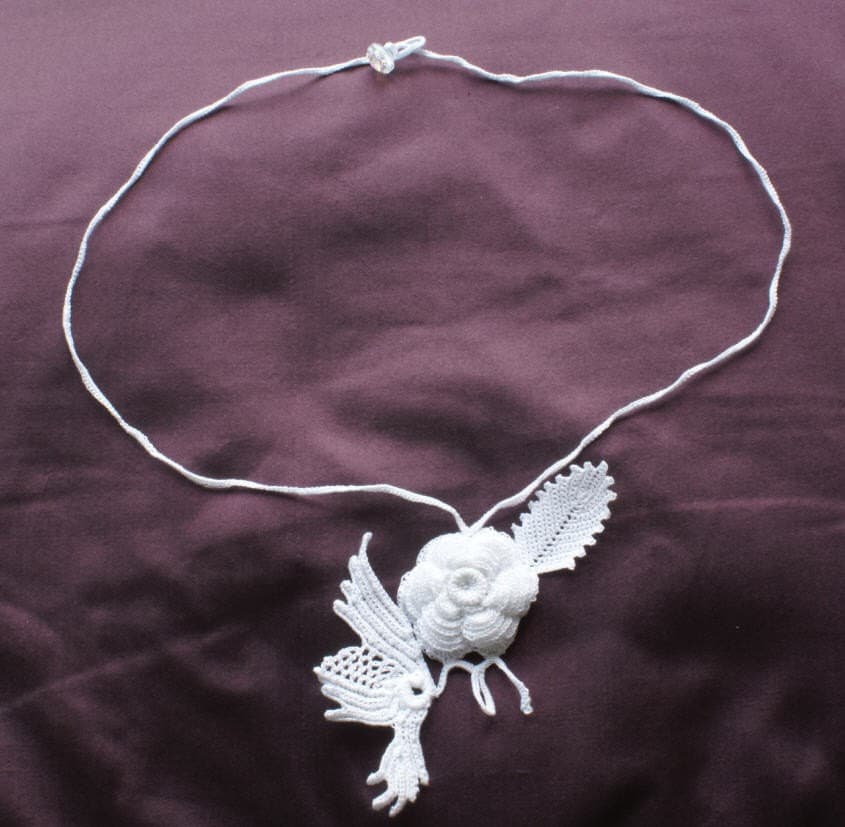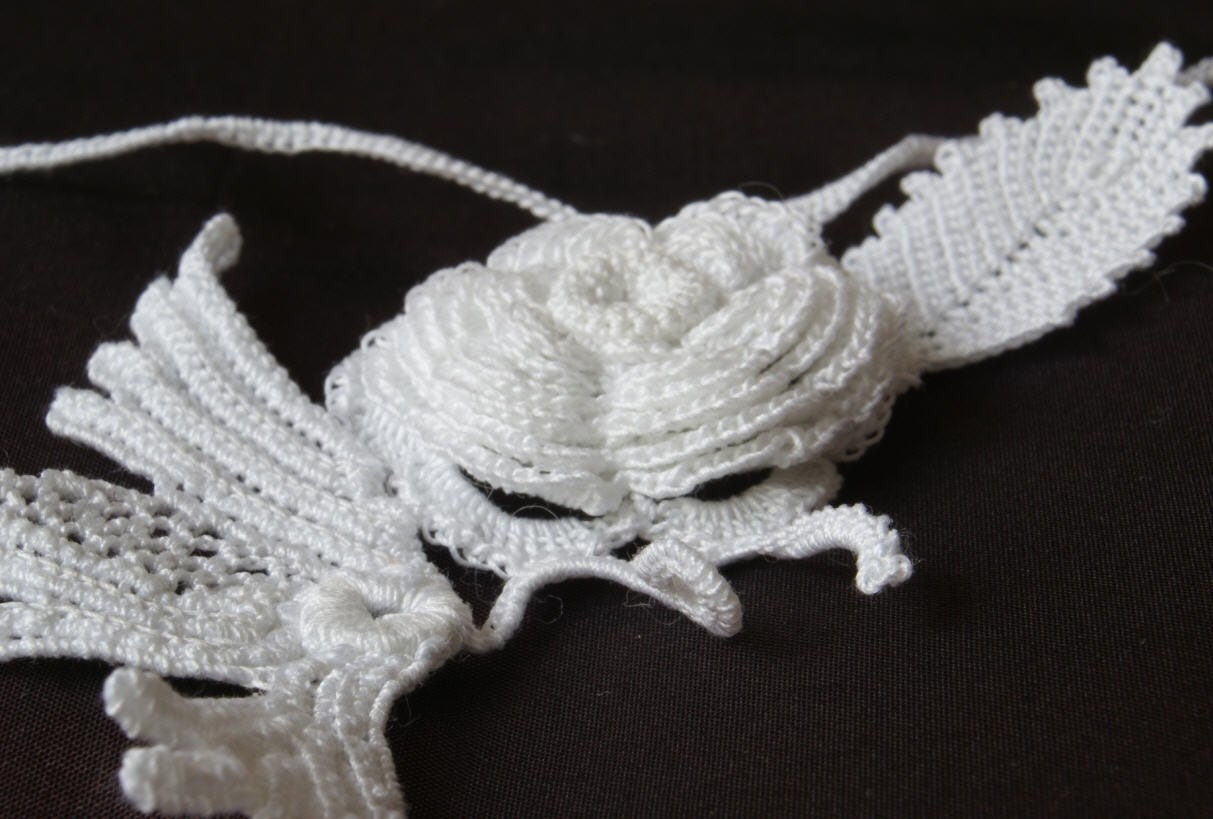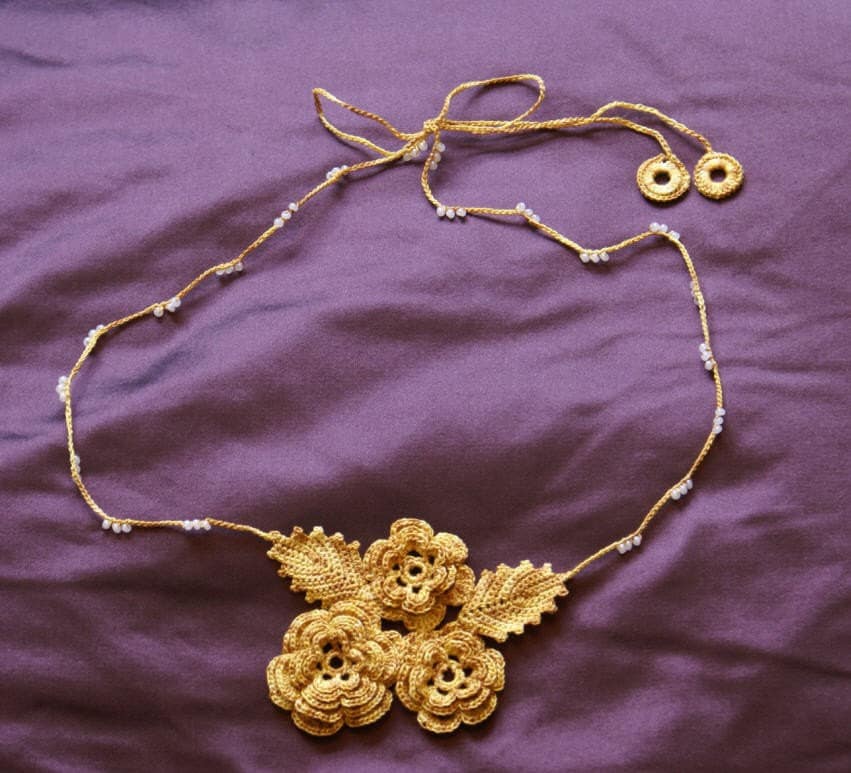This ia a particular Irish crochet "stitch" that is fairly complicated to complete. Traditionally it is created across the chain as shown here
The pattern should say how many chains should be worked before attempting to make the clones knot. It is a difficult stitch to describe in words but I will try ...
The pattern will call for a number of chains to be created for the Clones knot to be created over.
After completing the chain hold it in front of you as if you were about to crochet into the chain
Wrap the yarn round the hook as if you were going to make a treble stitch - you now have 2 loops on the hook.
Sweep the hook under the chain to the other side - away from you
Catch the yarn again (3 loops)
Then sweep the hook under the chain again - towards you
Catch the yarn again (4 loops)
carry on exactly like this until you have the requried number of loops (or overs) on your hook & chain.
You see from the image above that the loops are alternatively wrapping from one side then the other.
When you have the required number of loops (or overs) then draw a loop through all of the loops you have made, then yarn over again and draw through the last loop & pull tight.
Finally make a stitch in the chain at the base of the knot to encircle and close the knot.
Creating a clones knot will take some practice, it can be a tricky prospect to create one of these.
Sometimes your hook might get stuck while you are trying to pull through all the loops, I find that if you put your thumb onto the loops to pinch them before drawing the hook through it helps to make the hook run smoothly - otherwise a little bit of wiggling sometimes does the trick.
I recommend making a small crochet patch first and then making a row of clones knots on that to practice, the patch gives you something to hold and allows you to get the hang of the stitch before attempting a motif that requires it.
If the text above still leaves you confused then try having a look at this video for the
Clones knot. It shows the action required really nicely.
